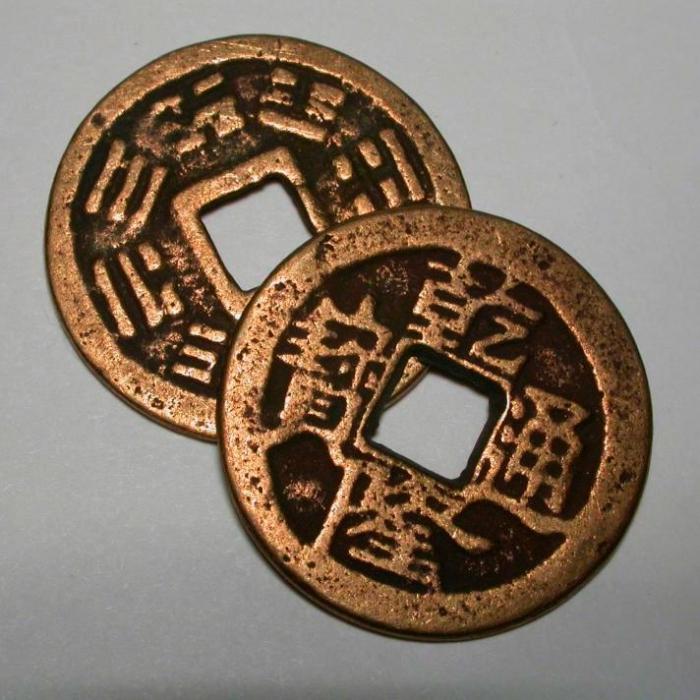
The first coin of China appeared, according to somedata, even in the eighth century BC. At that time, the inhabitants of the Celestial Empire used cowry shells as a means of money circulation. In addition, these decorative gifts of the sea served as decoration.

Forms for casting money, used by the Chinese,Originally made of plates made of pressed sand. But such matrices were fragile and were not exploited for long. Therefore, they were replaced by limestone. Then a two-sided matrix appeared. One plate was neatly applied to the other, metal was poured through special channels into the formed vacuum. His surplus poured out.
Coins had holes in order to pass throughthrough them a rope, they could be connected. In this way it was very convenient to move a large amount of money. Often paid with whole bundles, not individual coins.

The Chinese coin was mostly cast from bronze. Iron money was used much less often, their cost was much lower. In addition, there were silver or gold bars in the course. The composition of the bronze used for the production of money varied depending on the historical era. The greatest percentage of copper in it was accounted for during the reign of several dynasties - Wang Man, Ming, Tang. In the era of Sun, copper content in coins fell to 64%. With the Manchu Qing dynasty, this mark dropped to 50%. This valuable metal is often not enough to produce coins. For this reason, one of the rulers forbade the export of money to other countries.
When the Celestial Empire was captured by the Mongols,the issue of coins was seriously reduced. In the course, paper assignments were made, which were made on orders from the rulers of the new Yuan dynasty. However, the usual bronze round coin of China with a rectangular hole in the middle did not come out of use. The inscriptions on such money were still made in the Han language.

The next conquerors, Manchus, capturingweakened by the constant uprisings of the Celestial Empire in 1644, reformed. They issued coins, signed in their language. The new money was not only bronze, but also silver. In the middle of the nineteenth century, the mints of the Celestial Empire in order to save copper, imported from Japan, began to use brass. Also used was imported silver in the form of Spanish pesos.
Modern coins of China are yuan, and also jiaoand a fan. The latter are used very rarely, because their purchasing power is very low. Yuan consists of ten jiao, which, in turn, are divided into 10 fengs. The modern coins of China are not at all like their "leaky" bronze predecessors. The photo above gives an idea of them.
</ p>>